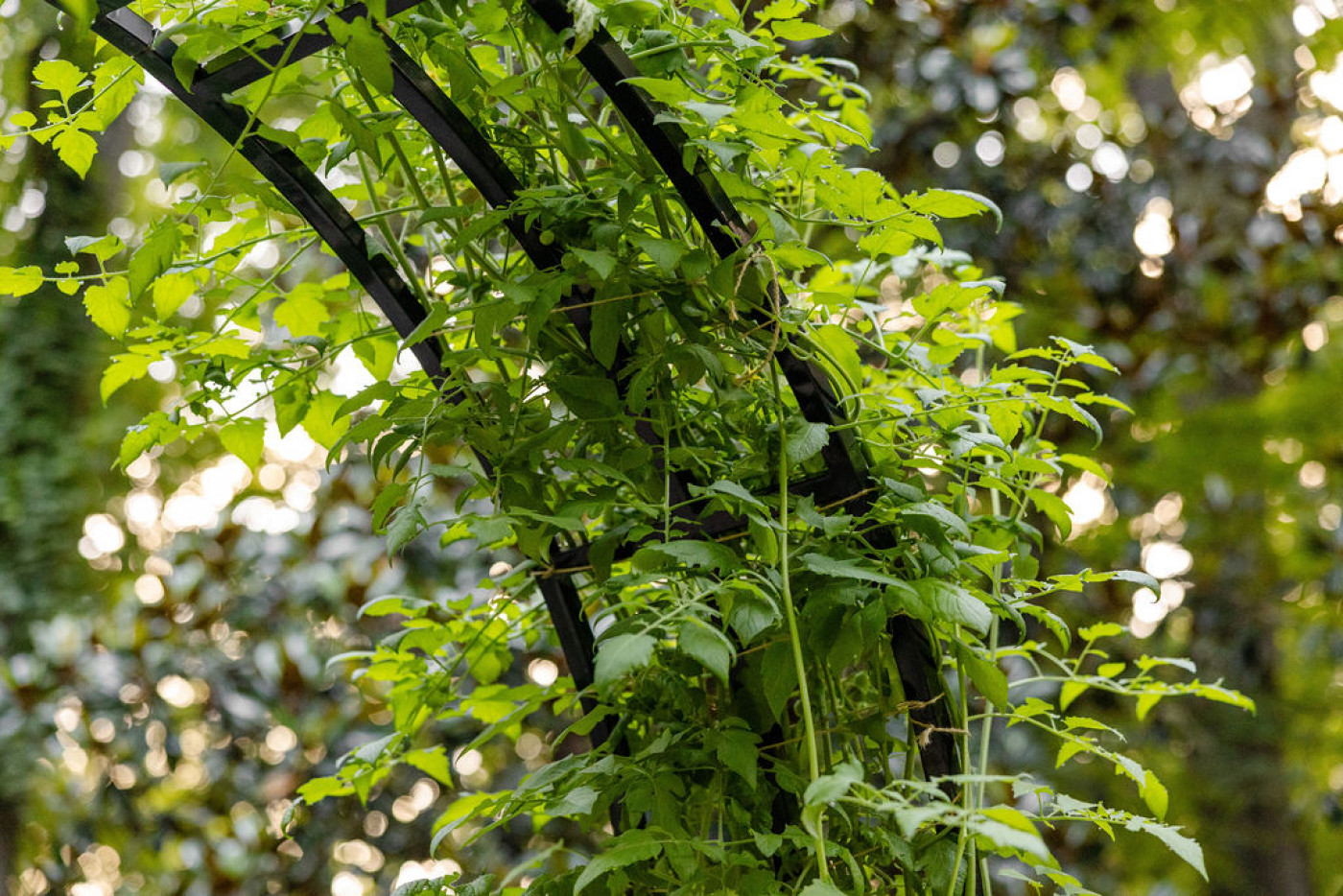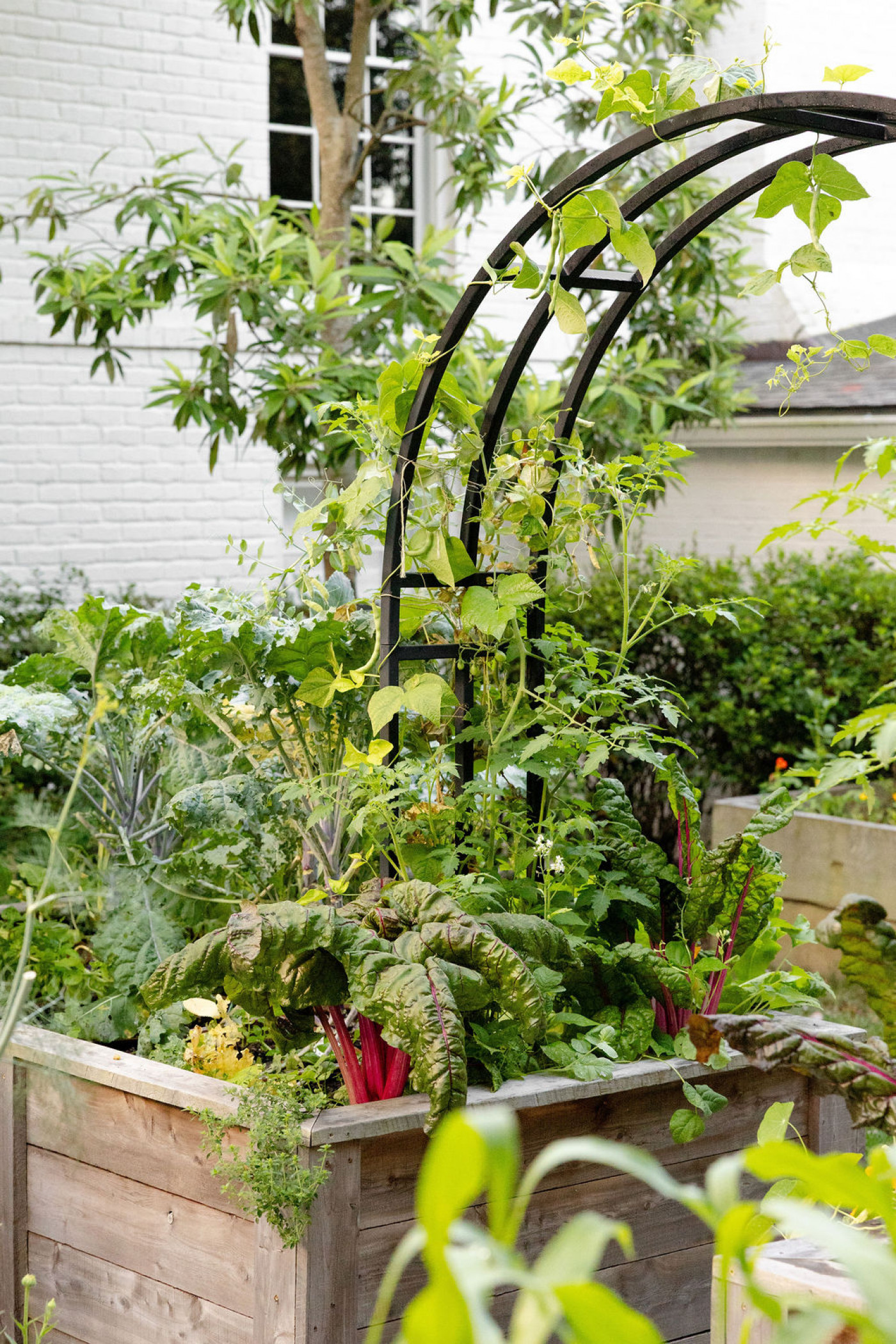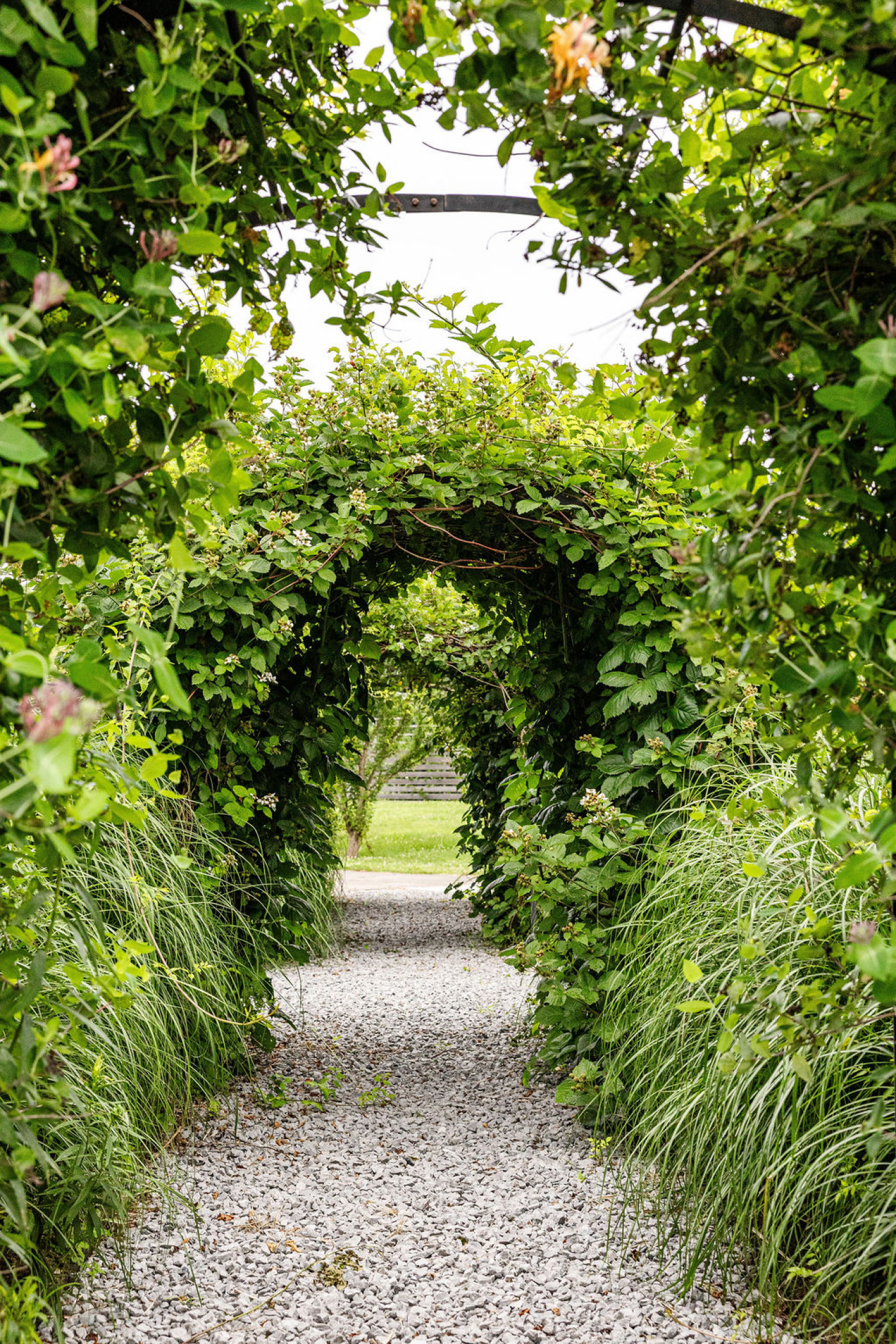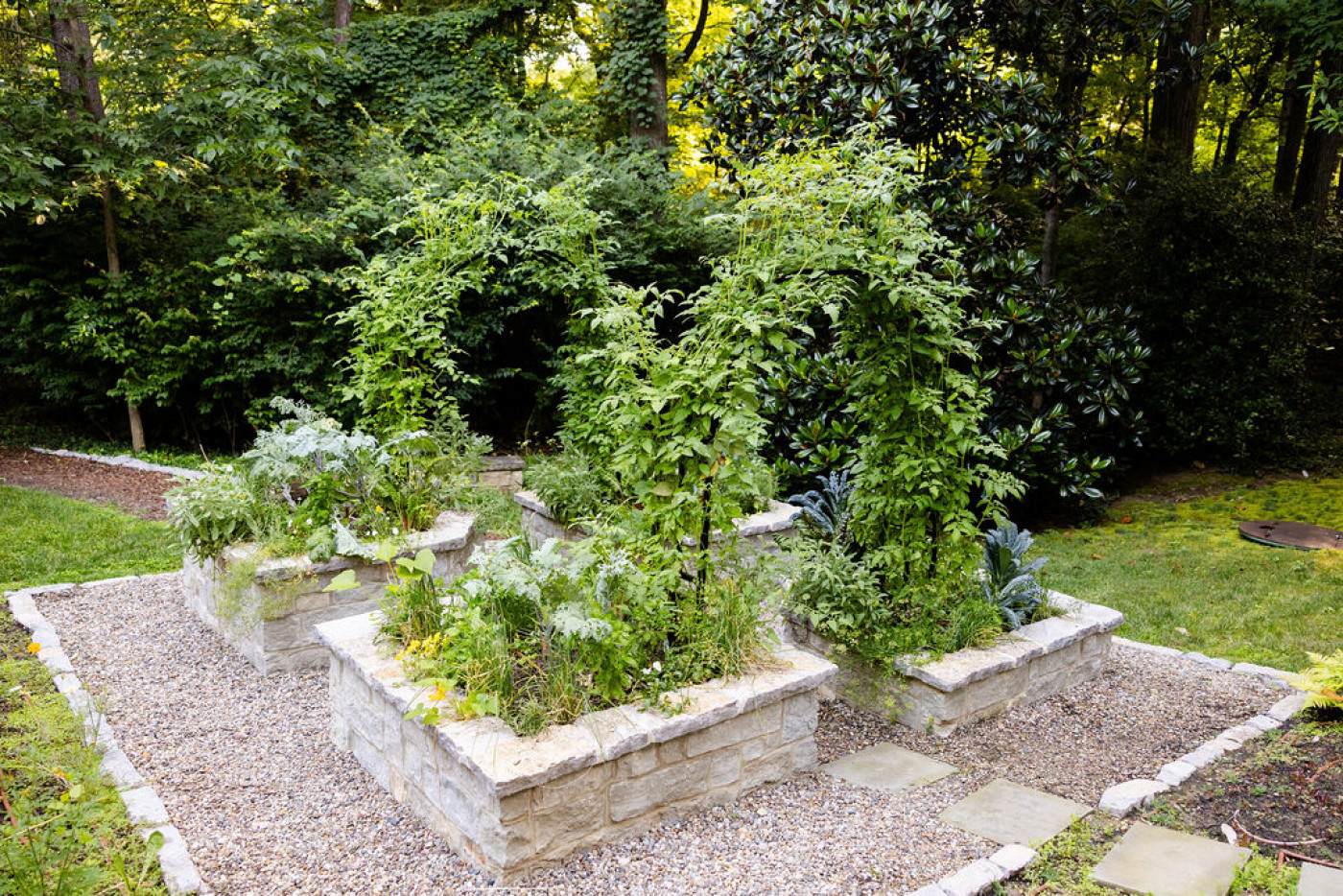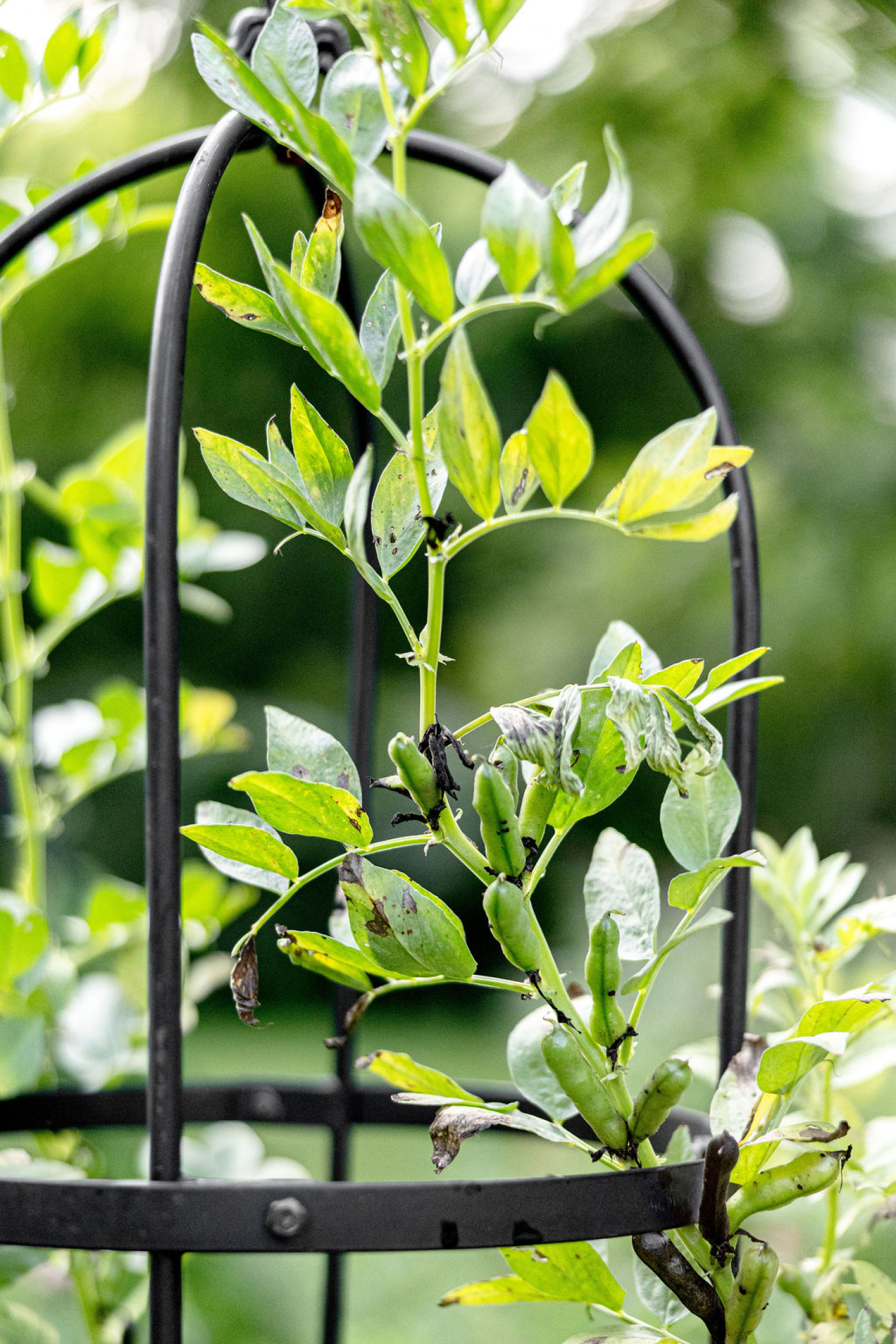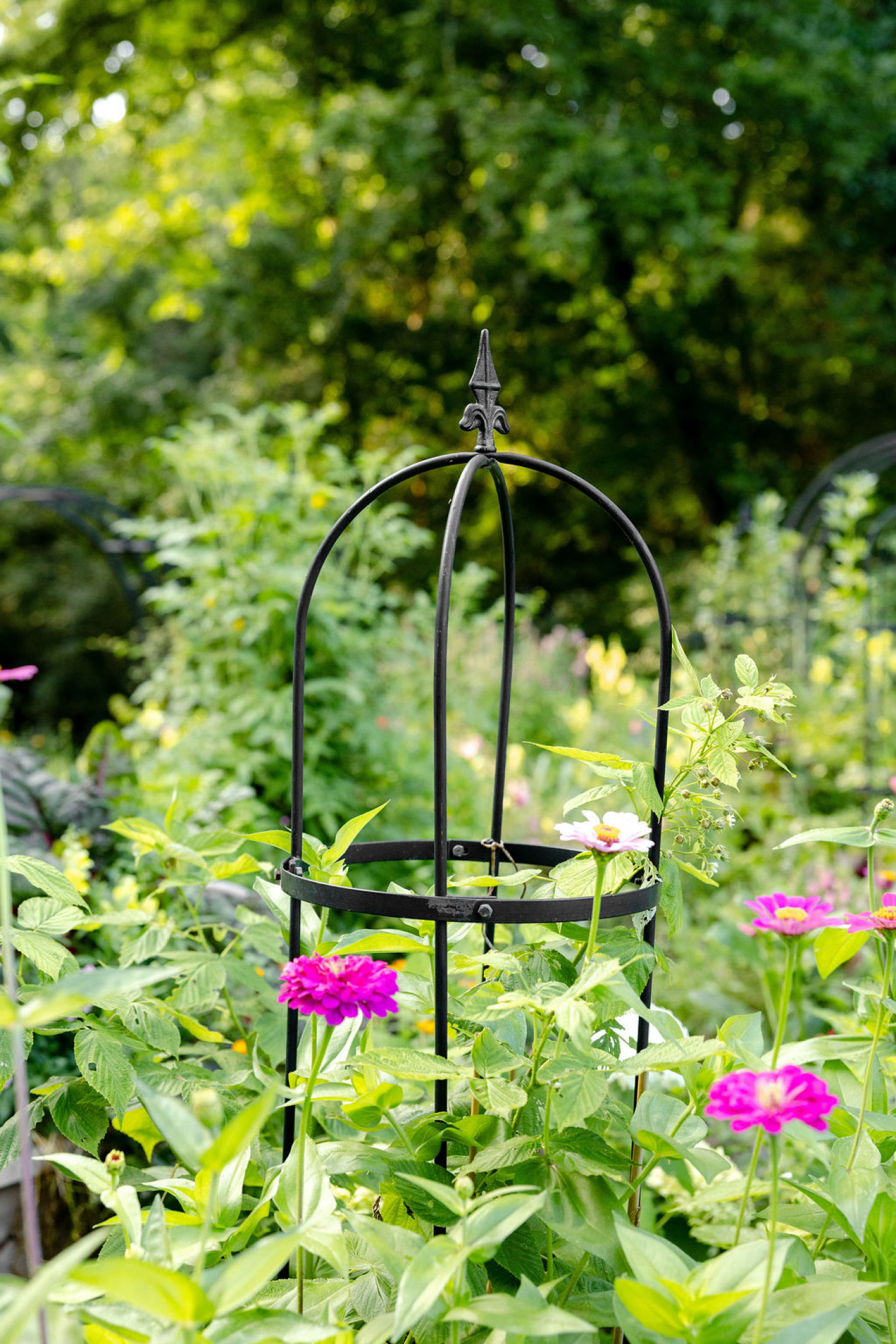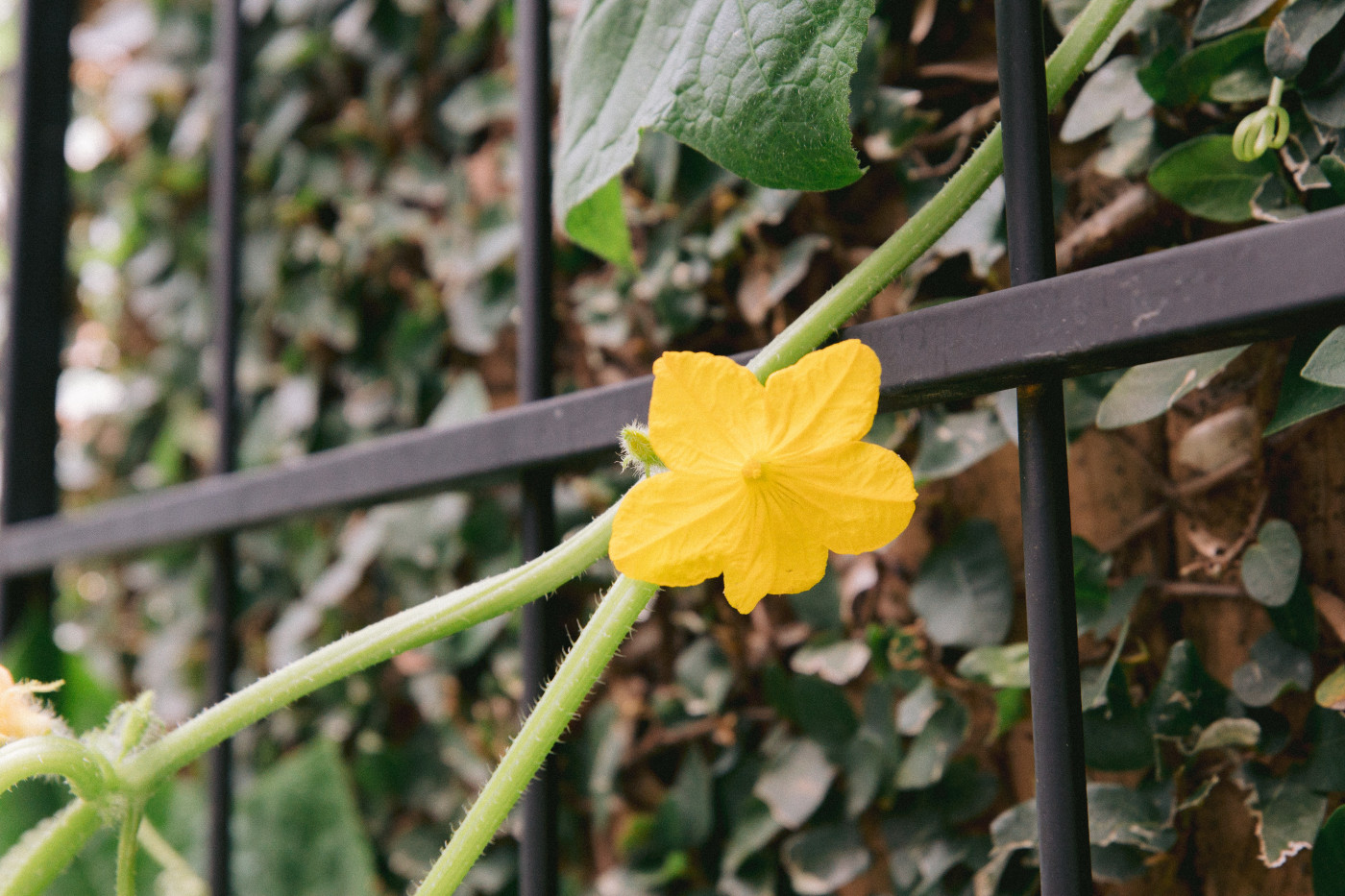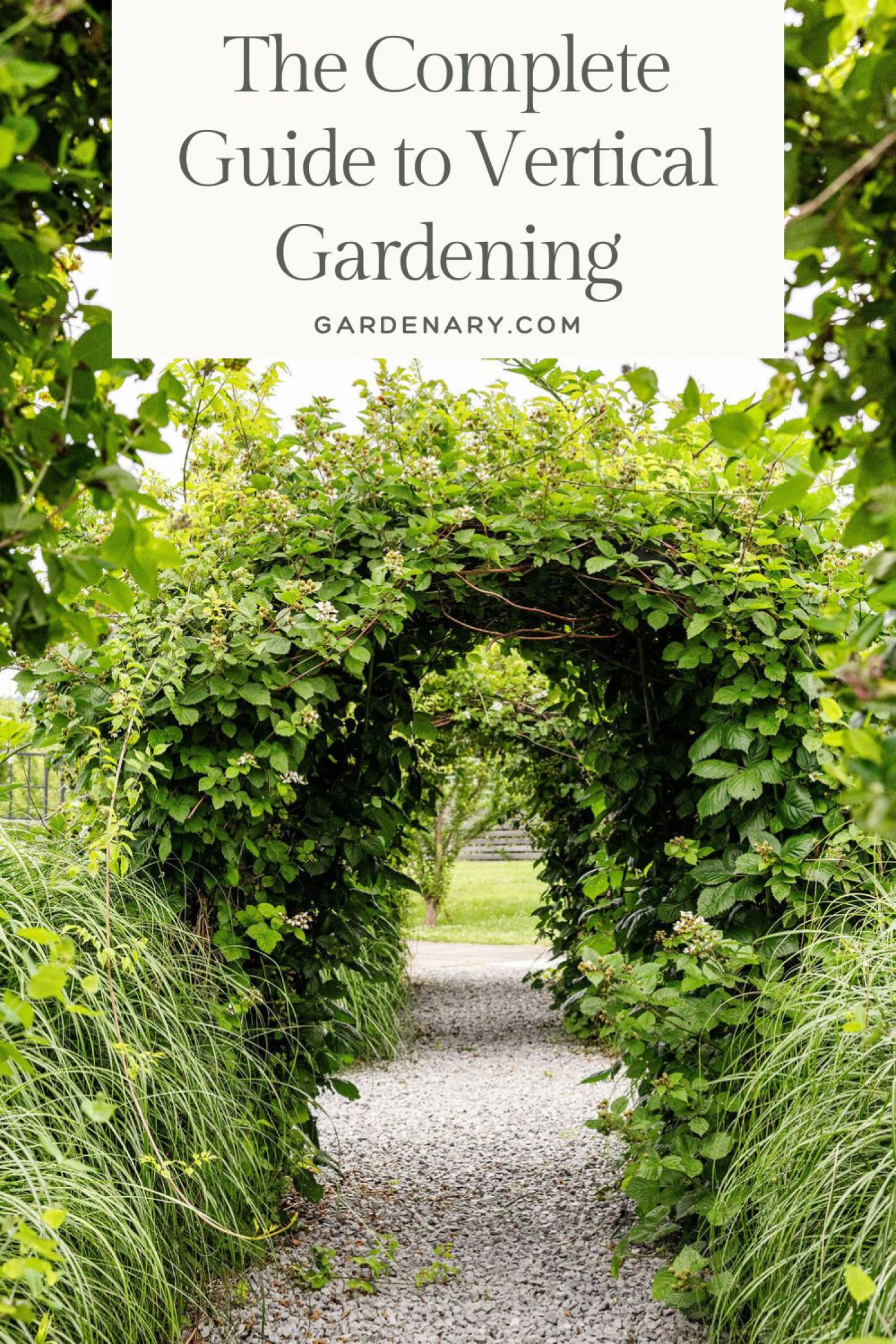If you're growing a vegetable garden and want to make the most of your space (and let's be honest, who doesn't?), let me introduce you to my secret weapon: vertical gardening. I still remember my first summer with an arch trellis; I went from crawling around in the dirt hunting for cucumbers to plucking them at eye level like I was shopping in my own backyard produce aisle. Today, I’m sharing my favorite plants for climbing, the trellises that support them, and all the little tips I’ve learned (sometimes the hard way) so you can grow more, harvest easier, and make your garden downright gorgeous.
I've been using trellises for years, and they have made a huge difference in the production, health, and beauty of my gardens. Setting up and maintaining vertical garden structures isn't as difficult as most people imagine, and it's an effective way to maximize your garden space.
At a Glance
- Learn how vertical gardening saves space, boosts airflow, and makes harvesting easier in any size garden.
- Discover the best climbing vegetables, herbs, and flowers to grow on obelisk, panel, and arch trellises.
- Get practical tips on choosing, installing, and using sturdy trellises to grow healthier, more productive plants.
Reasons to Use Vertical Gardening Structures
#1. Trellises Save Space
So let's talk about why you want to add trellises to your garden space. When you garden in a raised bed, every inch is prime real estate, and I like to think of a trellis as a high-rise apartment for plants. Instead of letting your cucumbers, beans, or squash sprawl across the ground, a trellis invites them to grow up instead of out. That means you can fit more plants in the same space and enjoy a bigger harvest.
One summer, before I discovered vertical gardening, my butternut squash practically consumed my garden bed, taking over half of the space and not leaving many resources for my other plants. Once I added a trellis, that same squash politely climbed up the frame, freeing up room for greens, herbs, and even a lovely row of radishes underneath.
Saving space with trellises also lets you experiment more without adding new beds. I can plant sugar snap peas in the spring, swap in pole beans for summer, and then let the fall peas take over again, all on the same trellis. It's the garden equivalent of getting three apartments for the price of one.
#2. Vertical Gardens add Airflow & Reduce Disease
One of the benefits of a vertical vegetable garden is the way it improves airflow around your plants. When vegetables grow on a trellis instead of sprawling on the ground, the leaves, flowers, and fruit each get their own space in the sun. That extra breathing room keeps plants healthier and makes it harder for pests, fungus, and disease to settle in.
I learned this the hard way during my first attempt at vertical gardening tomatoes. I had skipped the trellis and let them bush out, which basically turned the middle of my garden into a humid little jungle. The next season, I set up a simple vertical gardening structure and trained the vines up, and suddenly, my tomato plants were happier, drier, and producing more fruit than ever.
This same airflow boost works for all kinds of trellising vegetables. You can go big with cucumbers and pole beans, keep it colorful with tomatoes, or try your hand at training squash and zucchini up a trellis.
#3. Enjoy Easier Harvesting
One of the most practical benefits of a vertical vegetable garden is how simple it makes harvesting. When vegetables grow on a trellis instead of spreading across the ground, you can see exactly where the fruit is ready to pick. This means less time bending, searching, and moving leaves to find your next handful of produce.
With trellising vegetables, everything from cucumbers and pole beans to tomatoes and squash is easier to reach. You can walk through your garden and harvest at eye level, filling your basket in just minutes. This quick access also makes it easier to pick vegetables at their peak, which keeps plants producing for a longer season.
You're going to love the accessibility that vertical gardening brings to your space. If you've ever delayed going out to harvest because your veggies are crowded and difficult to find or reach, this will solve your reluctance.
A vertical gardening system allows you to grow a variety of vegetables in one space, keeping them within easy eyesight. You might have peas ripening on one side of a trellis and zucchini climbing the other, or tomatoes in the middle and herbs like basil or mint tucked underneath. This organized layout keeps harvests neat, efficient, and easily within reach.
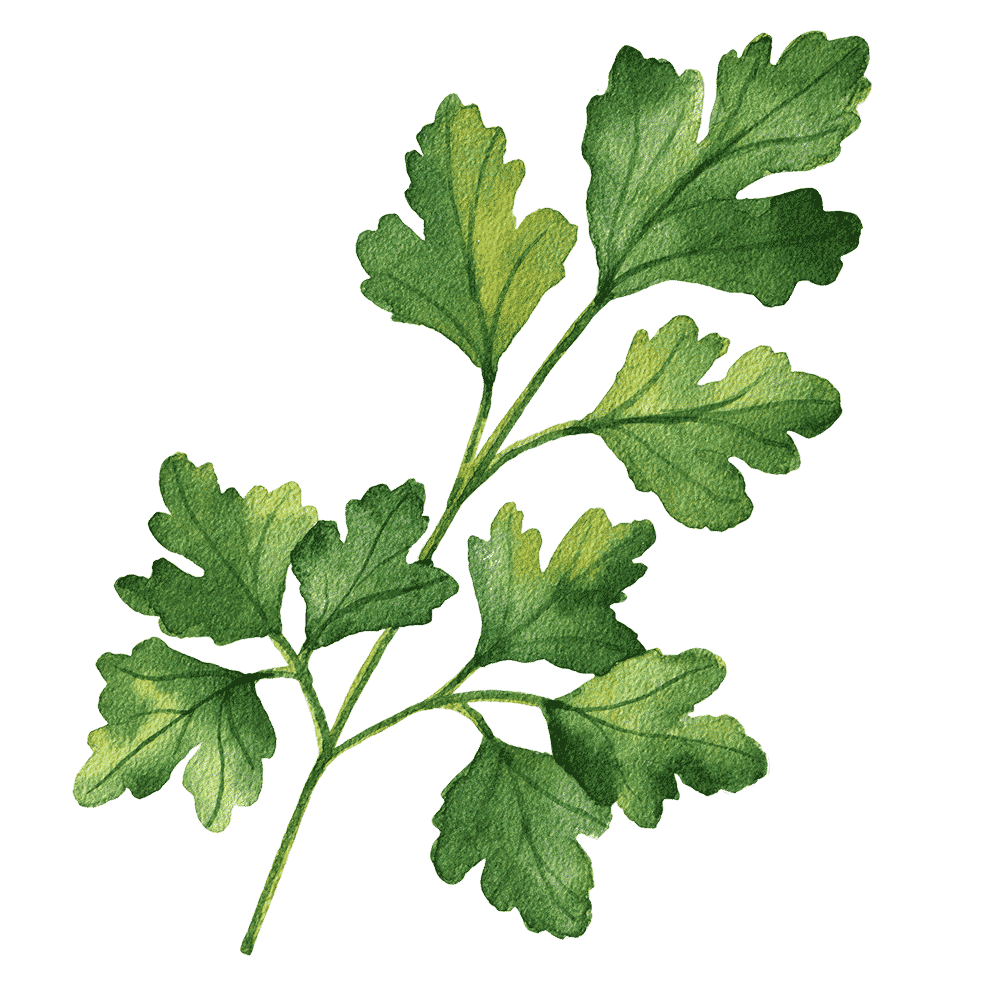
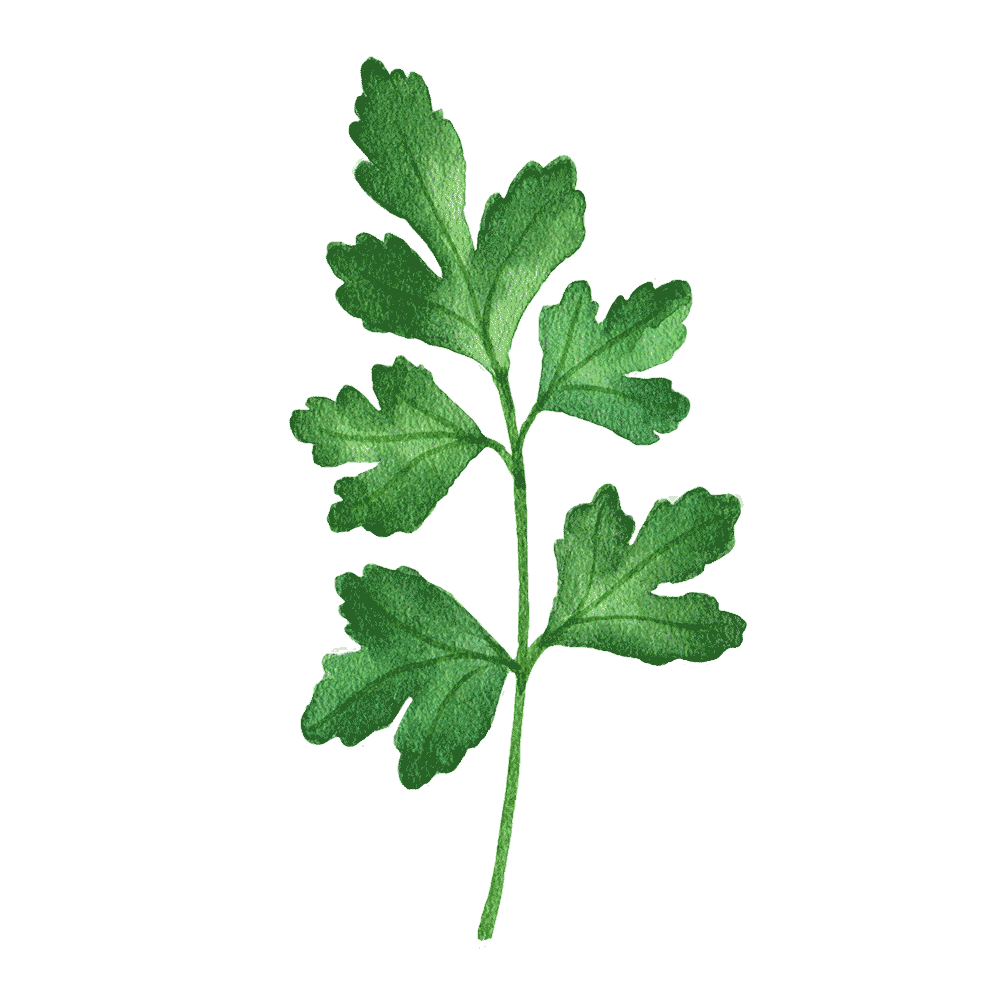
Start your dream garden this fall
#4. Trellises Reduce Overcrowding
Trellises are a great way to reduce overcrowding in the garden. When you grow vertically, you lift vining vegetables up and out of the way, which frees up space at ground level for other crops to thrive. So, no more cucumbers smothering your lettuce or squash sprawling over your herbs.
Growing plants on a trellis also increases their sunlight exposure. In many of our clients’ gardens, sunlight is precious, especially in suburban or shaded spaces. A trellis helps you make the most of every bit of sun your garden receives.
I like to come in and prune the lower leaves each week. This small step helps open up the plant so more light reaches the flowers and fruiting branches. With better airflow and more sun, plants stay healthier and produce more.
The 3 Best Types of Trellises for Vertical Gardening
There are three kinds of trellises that we like to use at Gardenary.
Arch Trellises
I love to use arch trellises to connect two raised beds. It's basically creating a brand new growing space in the air. (Don't put an arch trellis across one raised bed, or you'll risk shading all your growing space, which defeats the purpose.) There's nothing quite like an arch trellis covered in vining plants by the end of the season.
Arch trellises make harvesting even more enjoyable because they create a natural walkway lined with vegetables. You can grow climbing vegetables or herbs over the arch, allowing ripe produce to hang down within easy reach as you walk through. This setup makes picking effortless and turns your garden into a beautiful, productive tunnel of greenery.
Beyond their practical benefits, arch trellises add stunning visual appeal to any vertical vegetable garden. Even before plants begin to climb, the curved structure creates height and interest, making the garden feel full and inviting. By midsummer, when vines are draped across the arch and fruits are hanging like ornaments, the space transforms into a scene reminiscent of a fairy tale and is as beautiful as it is productive.
Obelisk Trellises
An obelisk trellis is like a teepee, and it's a great way to add vertical growing space to the center of a raised garden bed, especially if your bed is square. Their tall, tower-like shape draws the eye upward, making even a small garden feel grand. They work beautifully for lighter climbing plants such as peas, fava beans, pole beans, and smaller varieties of tomatoes, offering a sturdy yet compact support that fits neatly into raised beds or container gardens.
In addition to supporting vegetables, obelisk trellises are ideal for vertical gardening, herbs, or even flowering vines, giving you the option to mix beauty and harvest in the same space. The ornate metal design brings an old-world charm and classy ambiance to your garden.
Panel Trellises
Panel trellises are one of the most versatile vertical gardening structures you can add to your space. When positioned along a fence line or the back of a raised bed, they allow you to grow larger vegetables like cucumbers, pole beans, or tomatoes without crowding out smaller crops in front. When placed down the center of a wide bed, they double the growing space by providing vertical surfaces on both sides, making them a smart choice for anyone wanting to maximize harvests in a compact garden.
These trellises are also perfect for mixing vegetables with perennial plants or fruiting canes. You can train raspberries, blackberries, or even flowering vines alongside trellising vegetables for a garden that produces food while looking beautiful. A sturdy panel trellis keeps plants well supported, improves airflow, and creates an organized layout that makes both planting and harvesting easier.
Invest in a Sturdy Trellis
Once you decide on a style, you'll need to consider height and durability. When it comes to trellises, taller really is better. Vining plants like tomatoes, pole beans, and cucumbers will just keep growing all season long, so a short or flimsy trellis will leave you (and your plants) in a tangled mess. I always recommend choosing a trellis that's at least six feet tall and as strong as you can afford.
Personally, I love using metal or iron trellises because I know they’ll stand up to wind, rain, and the weight of heavy fruit. If you go with wood, just make sure it’s anchored really well. I like to push mine at least a foot into the soil to keep everything stable. A strong, tall trellis makes all the difference.
How to Set Up a Trellis
To set up a trellis the right way, start by choosing a spot where it will get plenty of sunlight and allow easy access for tending and harvesting. I always place my trellises so they run north to south when possible, which helps all sides of the plant get good light throughout the day.
Once you’ve picked your spot, press the base of the trellis at least 12 inches into the soil. That depth gives it the stability it needs to handle strong winds and heavy harvests.
If you're using a wooden trellis, take extra care to anchor it well so it doesn’t topple when your plants really take off. For metal or steel trellises, the weight helps, but I still make sure they're firmly planted and steady.
When your trellis is in place, simply plant your seeds or seedlings on the outside edge, not the inside. That way, you’ll boost airflow, maximize sunlight, and make it easier to prune and harvest without reaching through a wall of vines.
What to Grow in a Vertical Garden
There are so many climbing vegetables that thrive on a trellis and reward you with a big, beautiful harvest. These plants love to vine and stretch, and when you give them vertical support, they grow healthier and more productively. Here are some of my favorite vegetables to grow on a trellis:
- Pole beans
- Tomatoes
- Cucumbers
- Sugar snap peas
- Fava beans
- Zucchini (trained carefully)
- Butternut squash
- Pumpkins (surprising, but true!)
- Luffa gourds
Climbing herbs and flowers are another fun way to make the most of your vertical gardening structures. While not all herbs climb naturally, some will happily twine or trail if you give them support, and others can be gently trained to grow up. These herbs are perfect for adding fragrance, color, and texture to your trellis space. Here are some great herbs, flowers, and greens to grow vertically:
- Mint (can trail beautifully but should be contained)
- Thyme (vining varieties work well in hanging or trailing setups)
- Malabar spinach (technically a leafy green, but often used like an herb)
- Nasturtium (edible leaves and flowers)
- Passionflower (medicinal herb with stunning blooms)
- Lemon verbena (trainable with support)
Maintaining Your Vertical Garden
As your plants begin to grow, you'll have two jobs to do. One is to prune and the other is to tie.
I make it a weekly job to come out to the garden with my pruners and some twine. I do a little bit of cutting, and then I make sure that I've supported the plant all the way to the top of the trellis.
Once you've tied your plants to the trellis for the week, start pruning by removing any damaged or unhealthy leaves near the base, such as anything yellowing, browning, or full of holes. Then, trim away any extra growth that won’t contribute to fruit production so your plant can focus its energy where it matters most.
For peas, I like to snip off any late-season offshoots that likely won't have time to produce, so the plant can focus on ripening the pods already on the vine. With tomatoes, I keep the suckers but prune leafy stems that aren’t producing fruit, helping the plant direct its energy toward a faster, fuller harvest.
So are you convinced? Vertical gardening truly is one of the best ways to grow more in less space, keep your plants healthier, and create a garden that’s just plain gorgeous. When I first started out, I didn’t have fancy trellises or garden arches—I used bamboo canes and a big piece of netting we tied up between them. Looking back, it was basically a DIY panel trellis before I even knew what that was. And you know what? It worked. Those cucumbers climbed right up, stayed off the soil, and gave us harvest after harvest.
You can absolutely start that simply, and when you're ready, you can level up with Gardenary-style trellises like arches, panels, and obelisks that turn your space into a dream garden. However you start, the key is just to start. If you want more help, I’ve got so many videos and tutorials on my YouTube channel, or you can check out our most in-depth gardening courses here. I can’t wait to see all of the beautiful things you grow vertically this season!

